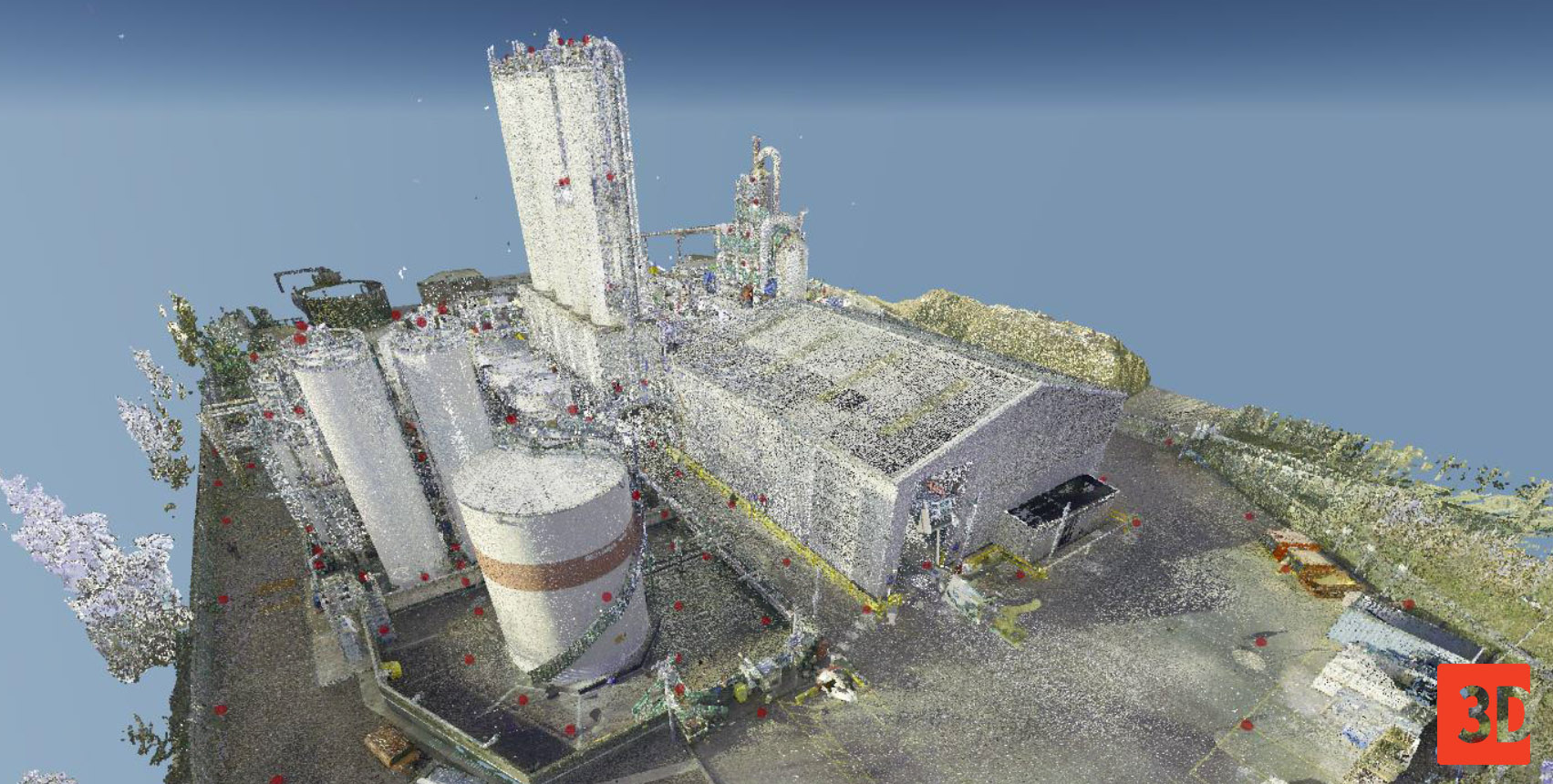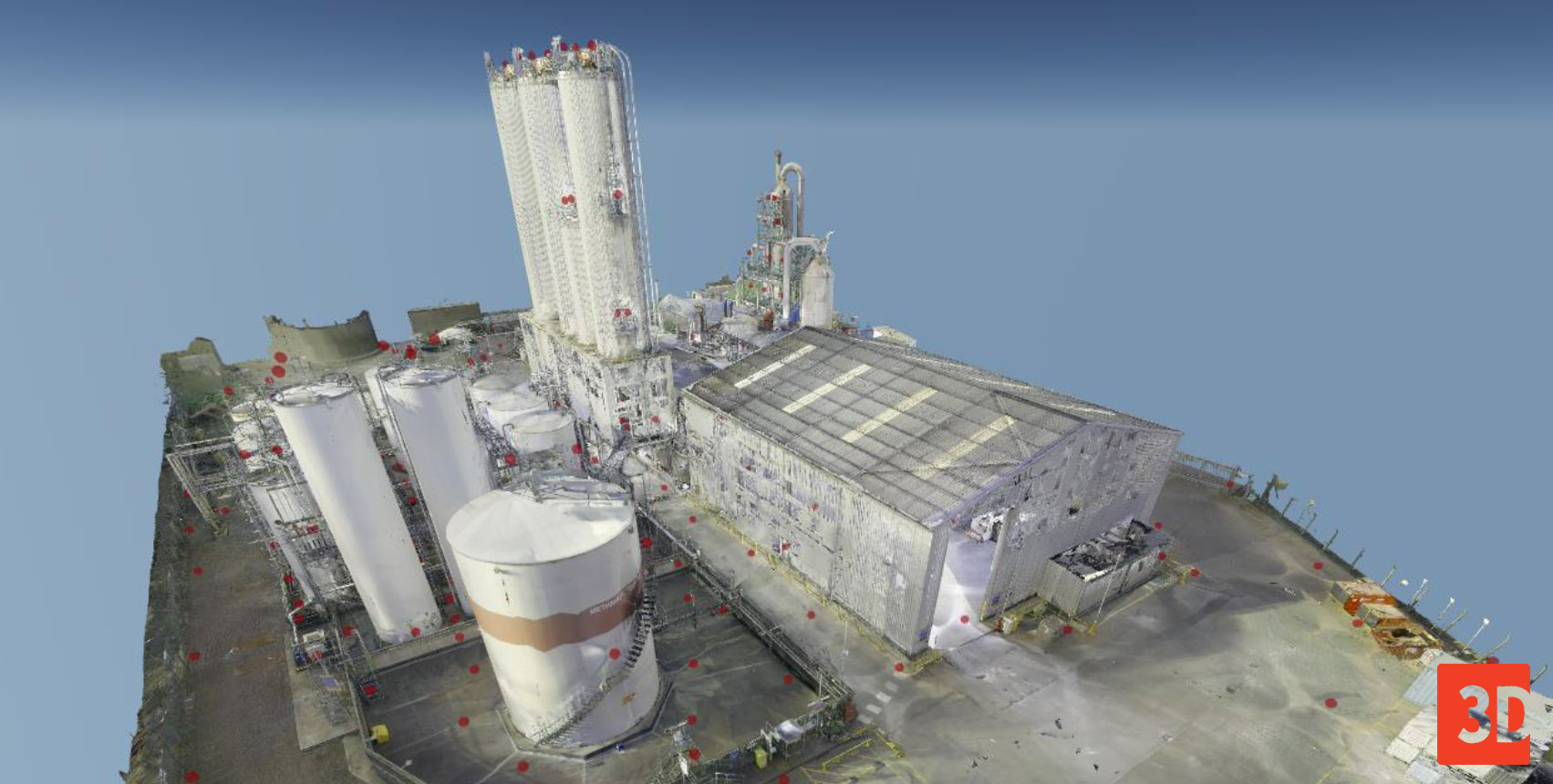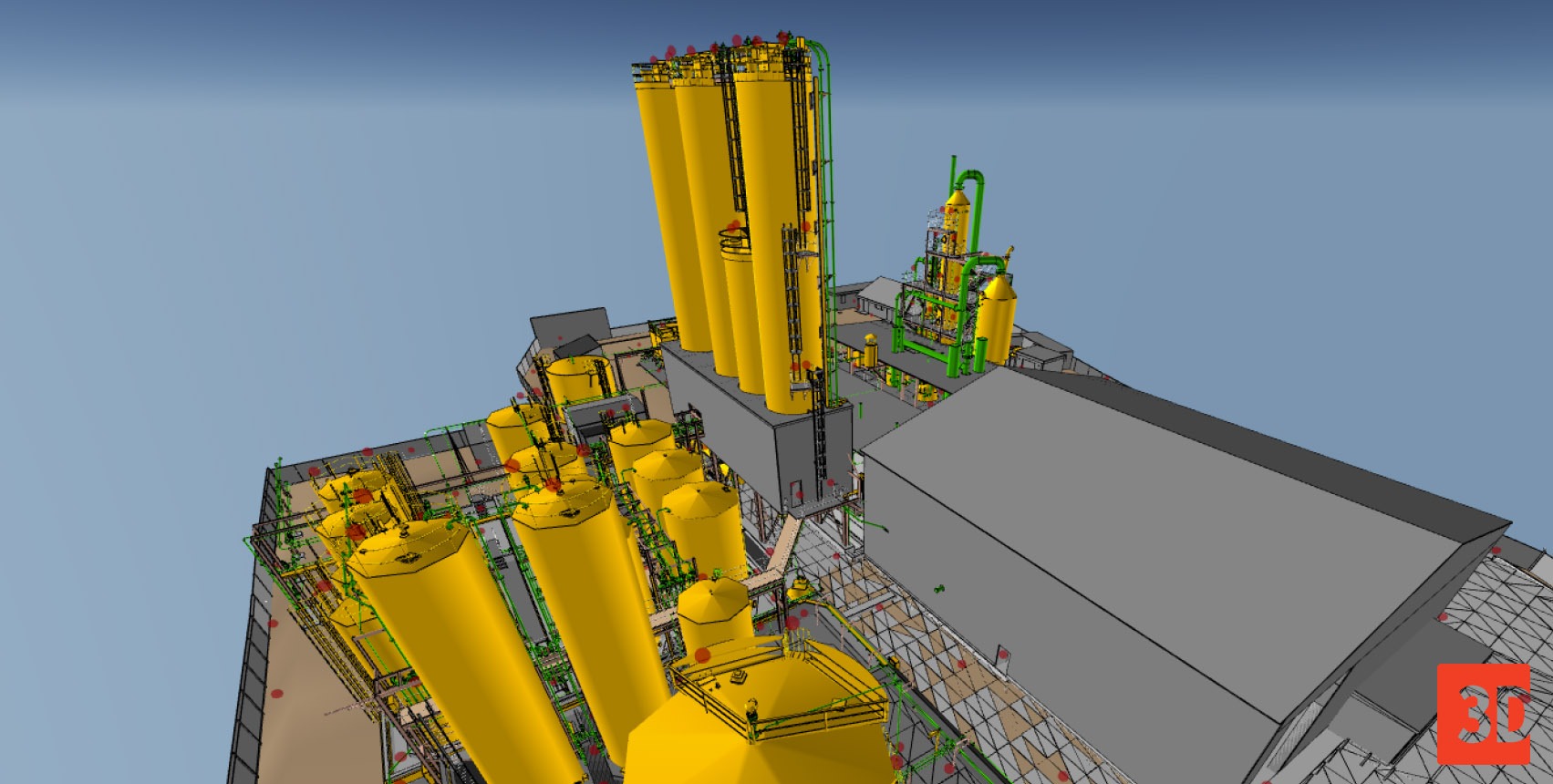The world of 3D can be confusing, especially regarding terminology. Many people use “point cloud,” “mesh,” and “3D model” interchangeably, even though each format serves a different purpose and offers unique possibilities.
For WebPano users, understanding these distinctions is crucial – it allows for efficient planning of presentations, measurements, and design processes. This article explains what point clouds, meshes, and CAD/BIM models are, their advantages, disadvantages, costs, and when to use them.
1. Point Cloud – the most accurate representation of reality

A point cloud is generated directly from 3D scanning (laser or photogrammetry) and looks like millions of colored dots in space, each with precise coordinates (x, y, z).
Applications:
-
precise measurements and analysis,
-
quality control (comparing the real object to CAD/BIM design),
-
documentation of the existing state.
Advantages and disadvantages:
-
maximum accuracy and a reliable representation of reality,
-
harder to interpret for inexperienced users, “raw” appearance.
Cost and processing:
-
Generating a point cloud is a direct result of scanning and costs no more than fieldwork.
-
No post-processing is required, only decimation (automatic process).
-
Data must be cleaned (e.g., removing noise or unnecessary elements), affecting preparation time and cost.
2. Mesh – surfaces instead of dots

A mesh is created from a point cloud by connecting points into triangles forming surfaces. This makes the object visually readable and suitable for 3D presentations.
Applications:
-
attractive visualization for clients,
-
collision checking (full as-built model not always required).
Accuracy and optimization:
-
More scanner positions result in a denser mesh with fewer “holes,”
-
Quality depends on triangle optimization – the mesh can be simplified for smooth performance or retain details at the cost of larger file size,
-
Mesh is non-editable – it is a representation of reality, not a design model.
Advantages and disadvantages:
-
readable and intuitive,
-
sufficient for many visualization and collision-checking applications,
-
less accurate than the raw point cloud,
-
cannot be modified like CAD/BIM models.
Cost:
-
medium – requires additional processing; higher precision and more scans increase preparation costs.
-
Process is still automated, time-consuming but computationally feasible.
3. CAD / As-Built / BIM Models – full functionality

-
Created in design software (AutoCAD, MicroStation, Revit, ArchiCAD).
-
Contains mathematically defined geometry – objects are editable and compatible with multiple CAD programs.
-
Applications: design, technical documentation.
-
A 3D model of a building enriched with information on materials, costs, and construction time.
-
Applications: multidisciplinary coordination, construction planning, facility management.
As-Built:
-
Reflects the actual state of the object after construction.
-
Editable and updatable – unlike a mesh.
Hybrid Approach – cost vs. accuracy compromise:
Fully modeling an object can be expensive and time-consuming. A hybrid approach uses a mesh for the whole object and CAD modeling only for critical fragments.
Examples:
-
Industrial installation – model only connection points with new installations.
-
Steel structure – hall remains a mesh; CAD models only joints for new elements.
-
Building – mesh for the whole structure + precise window/door openings for facade or joinery alignment.
This approach reduces costs and time while maintaining high accuracy where it matters most.
4. Costs and practical decisions
| Format | Cost | Accuracy | Application | Editability |
|---|---|---|---|---|
| Point Cloud | low | very high | measurements, quality control, documentation | ✖ |
| Mesh | medium | medium–high | visualization, collision checking, online presentations | ✖ |
| CAD/BIM Model | high | high, ideal | design, analysis, facility management | ✔ |
| Hybrid (mesh + CAD fragments) | medium–high | where needed | cost savings, precision only in key areas | partial |
Summary
-
Point Cloud = most accurate representation of reality.
-
Mesh = readable, great for visualization and collisions, but non-editable.
-
CAD/BIM/As-Built Model = full functionality, editable, expensive but indispensable for design and management.
-
Hybrid = compromise: mesh for the whole object + CAD only where truly necessary.
